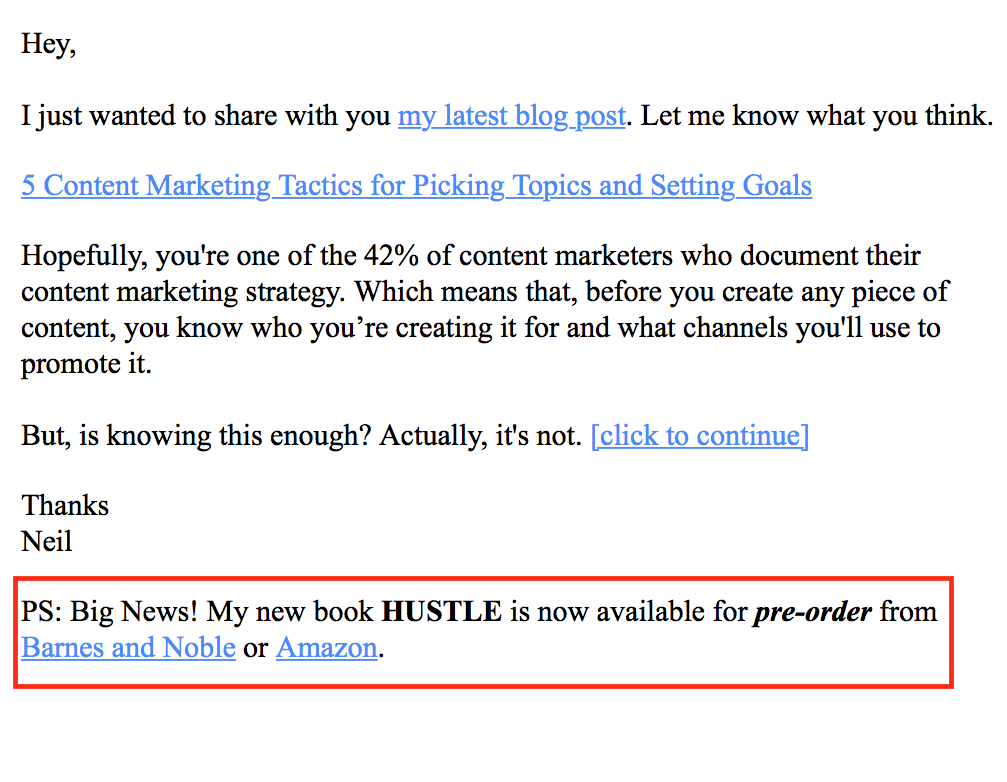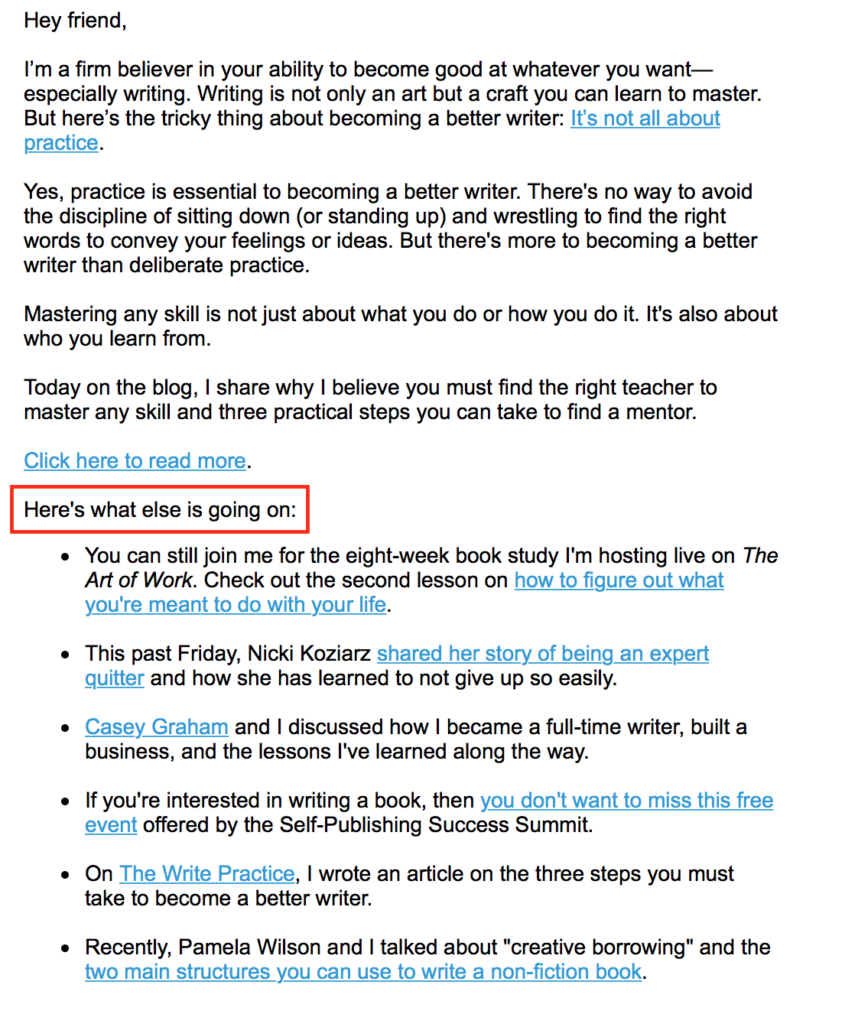Effective content marketing can determine whether your content is read by thousands of people or a handful of people, and your content marketing strategy can determine whether you’ll make a full-time income as a blogger or struggle to get by.
Many bloggers know this, which is why they continuously test different methods to expand their content’s reach. The blogger with 100 monthly visitors and the blogger with 100,000 monthly visitors both strive to get their content in front of more people.
But how can you consistently expand your blog’s reach? How can you attract more readers today than you did yesterday? Here are 11 cool content marketing tactics you can use to push your blog traffic to the next level:
#1: Accept Guest Posts
My blog generated the most traffic when I published two posts per day. But as my blog posts became longer and more content rich, it became increasingly difficult to publish as frequently and consistently.
I’m slowly getting closer to achieving that same frequency, but not because I’m writing 14 blog posts each week. Rather, I started accepting guest posts from my community.
Now I get free content for my blog without having to write a single word. How cool is that?
Of course, I still love writing at least one blog post every week, but having to write (and publish…big difference) a blog post every day would prevent me from addressing other parts of my business.
Accepting guest posts results in more updates and fresh content, and that results in more SEO love.
#2: Hire A Contributor
If you want to take accepting guest posts to the next level, you can hire a contributor who will produce the content for you. I recommend finding a paid contributor on Upwork and making sure this person is passionate about your blog’s topics.
You don’t want to hire a contributor who will write a blog post without any passion behind the topic. That lack of passion will show in the final draft.
If you hire a contributor, I recommend monitoring his or her content for 1-2 weeks and engaging in frequent conversations. This way, you are both on the same page and you’re more likely to get the content you want and expect.
#3: Use Internal Links
By linking to your content internally, you increase the amount of time readers engage with your blog. And the more time people spend on your blog, the more likely they are to come back for more.
Keeping people on your blog longer also helps build trust and will result in more subscribers and sales over time. Bring attention to some of your older posts and every new post you publish. On the flip side, you can edit your older posts to link to your newer content.
#4: Outsource More Tasks
Outsourcing opens up so much time to pursue other parts of your business. I’ve outsourced social media posts, blog post editing, podcast episode editing, video editing, and an array of other tasks.
After I started outsourcing these tasks, I was able to concentrate on creative ways to promote my content such as reaching out to influencers, promoting my content through various outlets, and growing my brand.
Outsourcing will open up more of your time, but be sure to use the extra time productively. Otherwise you’re completely missing the point of outsourcing.
#5: Create A Content Calendar
An editorial calendar is a guide that lays out which content gets published when. You can organize the publication of your content in such a way that includes weekly or monthly themes on your blog.
Monthly themes can help with product launches or affiliate promotions. For instance, let’s say you write a blog about the best toys around in July (and also know that new LEGO sets are coming out in August).
You can use mid-July and the entire month of August to focus your content creation efforts on LEGO sets. By the time you introduce your affiliate links, your audience will be more conditioned to buy the LEGO sets.
#6: Write Longer Blog Posts
Longer blog posts like these grab more attention and provide more overall value. When I published two blog posts each day, most were only 250-500 words. While I’ve lost that level of frequency, my current blog posts are more in-depth.
Writing longer blog posts is also great for more blog traffic. Not only do search engines love longer blog posts, but you’ll keep people on your blog for a longer period of time.
Think about it. If you’ve made it to this sentence, you’re virtually committed to reading this entire blog post. You’re committed to knowing all 11 tactics mentioned in the post, even if you skim.
Of course, no one is forcing you to read through the entire post, but once you make it to this point, full commitment tends to be the unwritten rule of reading content.
#7: Write 1 Blog Post Per Day
If you can muster it, writing one blog post per day will result in a blog that’s consistently updated with fresh content. While it may take a while for search engines to boost your traffic, writing blog posts at a frequent rate will also give you more content to promote on social networks.
My Twitter usage motivated me to write two blog posts per day. I mean, I was tweeting every 15 minutes and wanted to share fresh, original content. And by spacing it out over a long period of time, I was able to garner strong interest for my content.
I still knew I could tweet some content over and over because my new followers wouldn’t have seen it before, and my regular followers wouldn’t have seen everything. I try to write a lot of evergreen content so a tweet linking to a blog post from two years ago would still be relevant to both groups.
#8: Submit At Least 3 Guest Post Pitches Per Day
Writing guest posts for other blogs is a well-known tactic to expand your reach. In my experience, it’s easy to approach guest blogging inconsistently.
It’s easy to send multiple pitches in a single week, but then concentrate on creating content for one or two guest p0sts, and stop or simply forget to keep sending pitches.
That’s a mistake. Sending at least three pitches per day helps step up your commitment to producing more content because you may have to meet a deadline that is not self-imposed.
If you submit at least three guest post pitches per day, you’ll submit 1095 guest post pitches each year. Assuming a conservative 20 percent acceptance rate, you’ll write at least 219 guest posts in a given year.
Writing one guest post every other day may seem like a lot of work, but it will result in many more people seeing your content (perhaps millions of additional people will read your content depending on where it’s published).
A single guest post of mine, published on Jeff Bullas’ Blog, was shared over 6,000 times. Talk about more exposure (and that’s just one guest post)! Imagine if you got those results from more than one of your 219 guest posts.
In fact, if you averaged 1,000 shares for all 219 of your guest posts, you’d get 219,000 shares for all of your guest posts that year. It’s very easy to assume that, at this point, over 1 million people will have viewed your content.
#9: Link To Influencers In Your Posts
Influencer marketing will be a strong form of marketing for a very long time. The idea behind influencer marketing is that you mention several influencers within your blog post. You then email them to let them know.
Some will share your content with their audiences while others won’t. The key thing not to do in every email to an influencer is to ask them to share your content.
I’ve gotten many emails from people mentioning me in their content and saying something like, “Can you share this with your audience?”
Influencers know how influencer marketing works. Instead of asking them to share your content, just tell them you featured them in your blog post. Don’t try to influence the influencer with explicit requests because those emails are usually ignored.
The more influencers you mention in your content, the better, but make sure the content doesn’t drag on because you’re trying to mention every possible influencer in your niche. That’s why you write multiple blog posts.
#10: Create A Content Series
There’s nothing more frustrating than not knowing the ending. Imagine going to the theater, watching Rogue One, and then halfway through the movie the screen stops working. The staff comes out and says they can’t fix the problem. You get a full refund, but you are left with only half of Rogue One.
You don’t know the ending, and that will frustrate you until you see it at another movie theater.
While it’s very difficult to reproduce the same feeling as stopping halfway through Rogue One, you can still create a content series without an ending.
Imagine writing a blog post called “5 Ways To Get More Twitter Followers.” At the end of the blog post you can say something like, “I actually have a bonus tip to get more Twitter followers, but I’ll reveal it in the next blog post along with four additional tips.”
Now you build suspense while creating a content series. People who read and enjoy Part 10 will be more likely to read the other nine blog posts in the series.
#11: Ride The Trendy Waves Of The Internet
Google Trends allows you to see what is trending on the internet. If you can connect a trending topic to your niche, you’ll write a blog post that will get traffic from its value plus additional traffic from riding a trendy wave.
One writer from Mashable rode the wave of Taylor Swift’s 1989 World Tour at just the right time. She wrote a post in June 2015 on the Taylor Swift businesswoman guidebook.
No, Taylor Swift didn’t actually write a businesswoman guidebook and publish it on Amazon. Rather, the writer analyzed Swift and came up with tips that Swift seemed to exemplify. The final result was a blog post filled with business insights and Swifty euphoria that was shared across the internet.
In Conclusion
The great thing about content marketing is that no matter how much traffic you get, you can always get more. You can always challenge yourself to do more today than you did yesterday.
Getting more traffic involves writing valuable content and spreading it. Spread your content to more people via search engines, social media, blogs and influencers, and you’ll eventually build an unforgettable blog.
What are your thoughts on these content marketing tactics? Do you have tips to share? Sound off in the comments section below.




